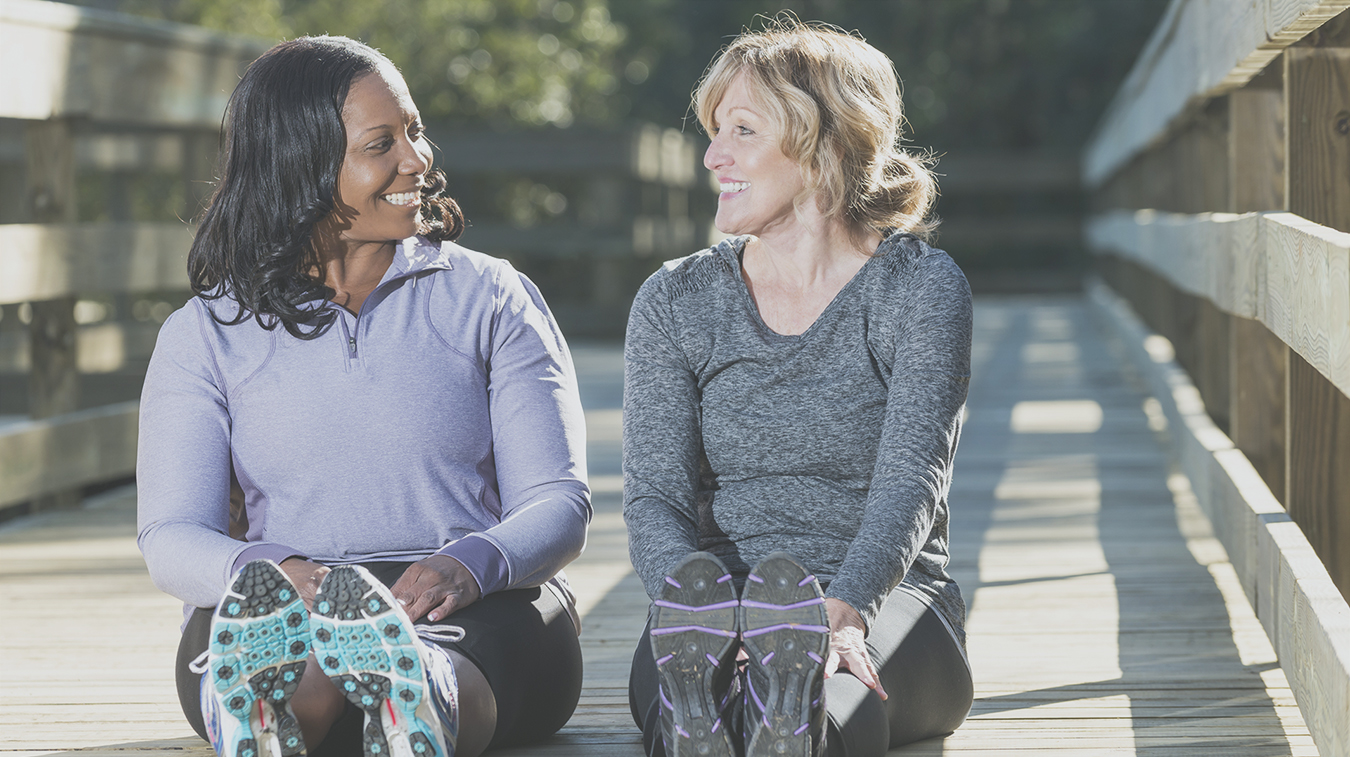TOLL FREE:
1-866-611-2665

Home SHOULD I BE CONCERNED ABOUT LOW BONE DENSITY?
Healthy bone looks like a honeycomb under a microscope, but as bone begins to lose density the holes and spaces in the honeycomb become larger. This can weaken the bone and cause it to break more easily.
During your lifetime, your body is constantly breaking down old bone (through a process called resorption) and building up new bone. Bone loss occurs when old bone is broken down faster than new bone is made and can lead to low bone density.
The older you are, the more likely you are to have low bone density, sometimes called osteopenia. It may also increase your chance of getting osteoporosis – a disease which causes bones to lose density and can lead to fractures, pain, and deformities.
Women and men begin to lose bone in their mid-30s. However, women are more likely than men to develop osteoporosis. This is because women generally have smaller, thinner bones than men. Plus, women lose bone tissue rapidly in the first four to eight years after menopause because of the sharp decline in estrogen.
Other risk factors for bone loss include having a diet low in calcium, an inactive lifestyle, smoking, certain diseases associated with malabsorption issues and hyperparathyroidism, and taking certain medications like glucocorticosteroids.
The most accurate way to determine the density of the bones is to have a bone mineral densitometry (BMD) exam, also known as dual-energy X-ray absorptiometry or DEXA scan. This exam sends a low-dose X-ray beam through the spine, hip, or forearm. Special computer software can subtract the soft tissue information and display the bone density measurements (in grams per centimetres squared, the bone mineral content divided by the area). Generally, the higher the mineral content, the denser the bone is, and the denser the bones are, the less likely they are to fracture.
During your BMD exam, you will need to avoid wearing clothes with buttons, metal buckles, and zippers near your spine and hip as they may interfere with the X-ray. You will be weighed and measured, then positioned on the table by the technologist. You will be asked to hold very still while the scanner moves over the area being examined. You may be scanned more than once.
Measurements must be very precise. A first (baseline) BMD exam is often taken at around age 50 and then subsequent exams may be recommended every two years. Since measurements can vary between machines, repeat tests must be taken on the same machine, or a new baseline will be needed.
Low bone density and osteoporosis rarely have symptoms, which mean you may not discover you have one of them until you sustain a painful fracture. This is why early detection is important, as well as being aware of risk factors.
According to Osteoporosis Canada, one in three women and one in five men will sustain an osteoporosis related fracture in their lifetime, and 80 per cent of all fractures in people 50 years of age or older are caused by osteoporosis.
The effects of low bone density can be mitigated with a balanced diet rich in calcium and vitamin D, a healthy lifestyle without smoking or excessive alcohol intake, and physical activity that includes weight-bearing exercises. Medication may also be prescribed to improve bone health.
Regular bone density testing is also recommended to monitor bone loss. A BMD exam is not usually required until you are 50 years of age or older, unless you fall into a high-risk category. To determine if bone density testing is right for you, you will need to discuss your risk factors and family history with a health care practitioner.
For more information about bone mineral densitometry, please visit our services page.
REFERENCES
Canadian Cancer Society (2022) “Bone density scan.” www.cancer.ca. Accessed October 18, 2022.
National Institute of Arthritis and Musculoskeletal and Skin Diseases (2018) “What is Bone?” www.bones.nih.gov. Accessed October 18, 2022.
National Osteoporosis Foundation (2022) “What is Osteoporosis and What Causes It?” www.nof.org. Accessed October 18, 2022.
Osteoporosis Canada (2022) “What is osteoporosis?” www.osteoporosis.ca. Accessed October 18, 2022.
Osteoporosis Canada (2022) “Diagnosis.” www.osteoporosis.ca. Accessed October 18, 2022.
Radiological Society of North America (2022) “Bone Densitometry (DEXA or DXA).” www.radiologyinfo.org. Accessed October 18, 2022.
Our Refresh newsletter delivers the latest medical news, expert insights, and practical tips straight to your inbox, empowering you with knowledge to enhance patient care and stay informed.
By subscribing to our newsletter you understand and accept that we may share your information with vendors or other third parties who perform services on our behalf. The personal information collected may be stored, processed, and transferred to a country or region outside of Quebec.
Please read our privacy policy for more details.
| Cookie | Duration | Description |
|---|---|---|
| cookielawinfo-checkbox-analytics | 11 months | This cookie is set by GDPR Cookie Consent plugin. The cookie is used to store the user consent for the cookies in the category "Analytics". |
| cookielawinfo-checkbox-functional | 11 months | The cookie is set by GDPR cookie consent to record the user consent for the cookies in the category "Functional". |
| cookielawinfo-checkbox-necessary | 11 months | This cookie is set by GDPR Cookie Consent plugin. The cookies is used to store the user consent for the cookies in the category "Necessary". |
| cookielawinfo-checkbox-others | 11 months | This cookie is set by GDPR Cookie Consent plugin. The cookie is used to store the user consent for the cookies in the category "Other. |
| cookielawinfo-checkbox-performance | 11 months | This cookie is set by GDPR Cookie Consent plugin. The cookie is used to store the user consent for the cookies in the category "Performance". |
| viewed_cookie_policy | 11 months | The cookie is set by the GDPR Cookie Consent plugin and is used to store whether or not user has consented to the use of cookies. It does not store any personal data. |